
Hotline:+86 18574103366
| |Richi Production Line: 1-2 T/H Feed Pellet Production Line 5-7 T/H Feed Pellet Production Line 8-12 T/H Feed Pellet Production Line 20-30 T/H Feed Pellet Production Line 5 T/H Aquatic Fish Feed Pellet Production Line 2.5-5 T/H Aquatic Fish Feed Pellet Production Line 1.8-2 T/H Aquatic Fish Feed Pellet Production Line 1-1.5 T/H Aquatic Fish Feed Pellet Production Line 0.5 T/H Aquatic Feed Pellet Production Line 60-72 T/H Feed Pellet Production Line 50-60 T/H Feed Pellet Production Line 40-50 T/H Feed Pellet Production Line 35-40 T/H Feed Pellet Production Line 30-35 T/H Feed Pellet Production Line 16-24 T/H Feed Pellet Production Line 13-18 T/H Feed Pellet Production Line 3-4 T/H Feed Pellet Production Line
We Provide 1-100 TPH Stable Performance 2.5-5 T/H Aquatic Fish Feed Pellet Production Line Turnkey Project That Will Produce Pellets With the World Standard Technologies!
KINDLY REMINDER: If you are interested in our products, Please get in contact with us
Richi machinery on selling stable performance 2.5-5 t/h aquatic fish feed pellet production line is specially designed for the fish farm owners, feed factory, top grade shrimp feed macnufacturer. The main equipment of a complete 2.5-5 tons per hour aquafeed pellet processing plant includes fish feed hammer mill, fish feed processing machine,feed mixing machine,counter-flow feed pellet cooler, scraper conveyor,box cylinder pulse dust remover, vibrating screen classifier,multi-pass convection belt dryer,spraying machine, intermittent liquid adding machine,automatic bagging system,electric control cabinet,etc. 2.5-5 t/h aquafeed production plant line is mainly suitable for the production of sinking fish,floating fish,shrimp feed for grass carp, herring, carp, trout, tilapia,grass shrimp, red tail shrimp, monarch shrimp, freshwater shrimp, prawn,salmon,catfish,carb,etc.
1. Cleaning of raw materials and a coarse crushing
There are generally two forms of raw materials used in feed mills: one is powder, which does not need to be coarsely crushed. The other is pellets, which are materials that need to be coarsely crushed. Primary coarse pulverization is the pretreatment process of ultrafine pulverization in aquatic feed processing. Its main purpose is to reduce the particle size difference and variation range of materials, improve the working condition of the ultrafine grinder, and increase the working efficiency and guarantee of the ultrafine grinder Stable product quality.
2. The first batching and mixing
The first batch of ingredients is mainly the preparation of popular raw materials, that is, the preparation of relatively large materials in the formula. This process is mainly completed by the electronic batching scale. The first batching and mixing is also the pre-treatment process of ultra-fine pulverization, which is mainly to reduce the variation range of material particle size, improve the working condition of the pulverizer and increase the working efficiency of the pulverizer, and ensure the quality of the product.
3. Secondary crushing and mixing of secondary ingredients
Due to the low food intake of aquatic animals, short digestive tract, and poor digestion capacity, aquatic feed requires a very fine particle size to increase the surface area of the feed, increase the contact area between the digestive juice of aquatic animals and the feed, and increase the feed of aquatic animals. The digestibility and feed remuneration; at the same time, due to the low intake of aquatic animals, the mixing uniformity of the feed is required to be reflected in a smaller range, which also requires the aquatic feed to have a finer particle size. For example, all the shrimp feed must pass the 40-mesh analytical sieve, and the 60-mesh sieve must be less than 5%, so the micro-grinding process must be used. Various raw materials enter the secondary mixer after secondary batching. There is an artificial feeding port above the secondary mixer, which is mainly used for adding trace additives. After the material is pulverized and mixed with the secondary ingredients, it enters the subsequent process---expansion granulation process.
4. Puffing and granulating section
In the extrusion process, the material actually goes through a cooking process under high temperature, high humidity and high pressure. In this process, the physical and chemical properties of the material change strongly, and the moment the material is extruded from the die hole, because the pressure suddenly drops from high pressure to about 100kPa, the water in the feed is immediately transformed from liquid to gas and is emitted from the feed. So that the material is expanded to form the so-called expanded feed. Because this feed not only has the advantages of general hard pellet feed: good palatability, avoids automatic classification of products, is convenient for transportation, helps digestion, reduces waste in the feeding process, etc., but also has unique advantages: starch in the feed The gelatinization degree is high, the protein is easier to digest, and the utilization rate of the animal's feed is improved; it has excellent floatability, which is convenient for observing the feeding situation of fish and can control water pollution to the greatest extent. These are also the main reasons why extruded feed is widely used.
5. Particle drying and cooling section
After the material is extruded by the extruder, it will form squishy particles (with a moisture content of 25% to 30%). At this time, it is best to use pneumatic conveying instead of using a hoist to lift. Due to the high moisture content of the material conveyed by pneumatic force, it must be dried in the dryer to reduce the moisture of the material to about 13%. After the materials are dried, they enter the external spraying system. The external spraying of particles is mainly to meet the energy requirements of fish and reduce the loss of heat-sensitive substances during processing. Nutrients that should not be added in the previous process can be supplemented by spraying, and at the same time it can improve the palatability of the feed and reduce the powder content. The best working temperature for this process is around 80°C. After the material passes through the external spraying system, it can enter the countercurrent cooler for cooling.
6. Particle screening and packing section
The cooled material is lifted by a hoist and then crushed into the plane rotary screen for classification. The grading sieve is generally a two-layer sieve, and the material on the lower sieve is the finished product, which can be directly entered into the finished product warehouse, and then weighed and packaged
1. The puffed fish feed pellets can float on the water surface without dissolution for over 24 hours, reduce feed waste and keep the water quality.
2. After treatment of puffing, fragrance and palatability of the feed has been improved to stimulate appetite of animal.
3. From the fish feed extruder, feed pellets are in 'popcorn' state, not only physical state has been changed, but also shape and internal structure of organic molecules has been changed, which make feed pellets easier to digest and absorb for fish.
4. High temperature and high pressure process can kill the salmonellosis and bacterial infections and makes the pellets Hygeian for fish.
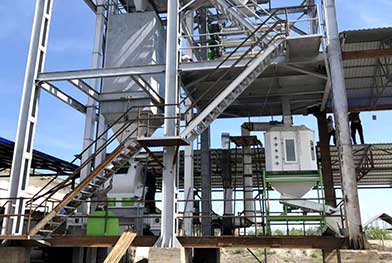
Uzbekistan 5 T/H High Efficiency Sinking Fish Feed Pellet Making Plant Project
Country: Tashkent, Uzbekistan
Capacity: 5 T/H
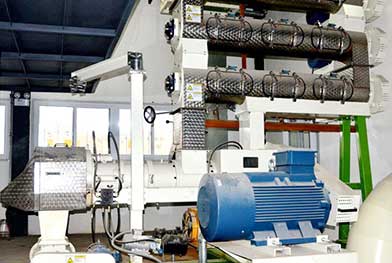
Puerto Rico 1200-1500 KG/H High Quality Fish Feed Pellet Mill Plant Project
Country: Puerto Rico
Capacity: 1200-1500 KG/H
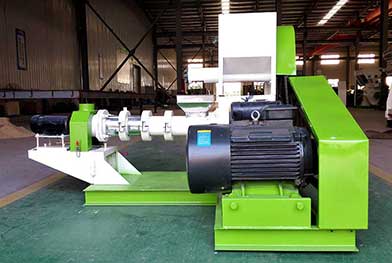
Bolivia Easy to Operate 100-150KG/H Fish Feed Extruder Project
Country: Bolivia
Capacity: 100-150KG/H
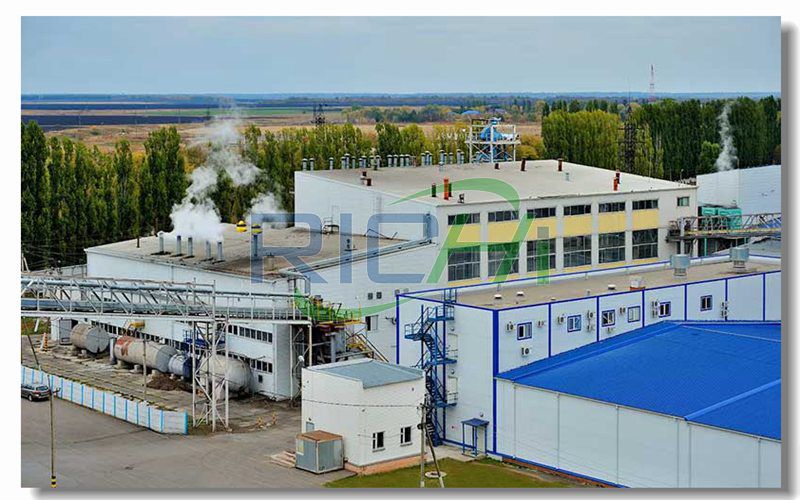
Turnkey Project of 4.5 Tons per hour Straw, Sawdust, Bamboo Chips and Biomass Pellet Production Line
Turnkey Project of 4.5 Tons per hour Straw, Sawdust, Bamboo Chips and Biomass Pellet Production Line. This project is not a simple biomass pellet production line, but a pellet production line that produces 4 different raw materials. The raw materials are
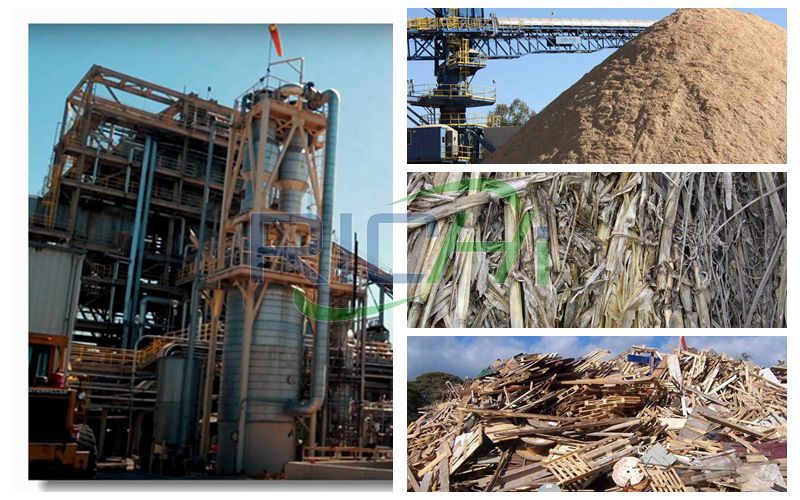
How to Use Furniture Factory Sawdust, Shavings, Wood Chips, Bamboo Shavings and Waste Crops to Make Biomass Pellet Fuel?
How to Use Furniture Factory Sawdust, Shavings, Wood Chips, Bamboo Shavings and Waste Crops to Make Biomass Pellet Fuel? We know that furniture factories generate a lot of waste every year, such as sawdust, shavings, bamboo shavings, small wood chips, sma
How Much Is the Feed Pellet Machine? What Is That Fish Feed Extruder? I want to inquire how much is ...
Canola Meal Is Used to Make Livestock Poultry Feed and Aquatic Feed Pellets? With high protein conte...
Britain Reaches Net Zero by Processing Insects Into Aquatic Feed and Poultry Feed. A switch to insec...